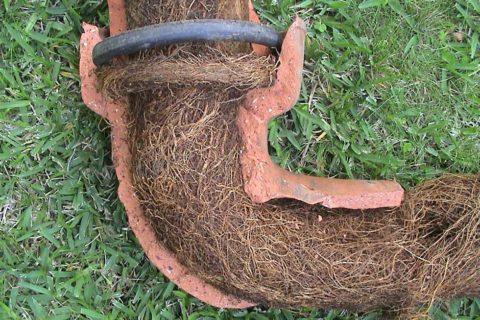GARDEN ROUTE NEWS - Beautiful, mature trees are a most desirable feature of any garden. However, they can also have negative impacts on our lives and property.
Trees growing too close to buildings pose a very serious threat to foundations and drains.
Ground subsidence is a particular problem during long, dry periods and sometimes it is difficult to tell whether this is the effect of long-term geological changes or ground movement due to tree roots.
Tree-root damage and subsidence problems occur commonly in areas of clay soil known as hazardous clays or firm shrinkable clays. Clay is composed of a net of very fine particles which enclose relatively large pockets of water. For this reason, it is not very compressible, unlike sand and gravel soils.
Do your homework
Before you put a tree in the ground, it is imperative to know a few things about the tree, particularly the nature of its root system. Different trees have different types of root systems: some are fine and compact, but by and large the majority will have root systems that extend down and outwards in balance with the top growth of the tree. For most trees, the roots extend outwards just a little further than the canopy of the tree, identifiable by the shadow that the canopy would create on the ground if the sun were directly overhead. As a general rule, tree roots can spread laterally to a distance equal to a tree's mature height. When making assessments, it is important to consider what a tree's final height will be, not its present size. Trees that grow fast above also grow fast below ground.
Some trees are tolerant of root pruning, however they experience tremendous damage and can be prone to fungal diseases. There is also a risk that a root-pruned tree may blow over during a storm because its anchoring mechanism has been damaged.
Roots can displace foundations
Old houses often live happily in equilibrium with their trees, especially when the trees have grown to maturity. But many old houses have substantial areas of underground brickwork that is saturated and slowly decaying. Tree roots can invade cracks and cause further deterioration. As roots penetrate foundations, they will have a jacking effect on the wall, causing lateral cracks at its base. If the tree is much too close, large roots may actually have the strength to displace foundations. No trees should be within a third of its height, or less than 4m, from a building.
Drains may become clogged as fine root hairs invade cracks or the collar where sections join. Leaking drains may encourage the spread of tree roots in their direction.
If you are buying an old house, be suspicious of a structure close to trees that have been recently painted, plastered or covered with creepers. Such work could conceal cracks, large and small.
The following are trees to avoid at all cost near buildings, paving or pools: kiepersol, fig trees, Strelitzia nicolai, New Zealand Christmas tree, coral trees, white stinkwood, schefflera, ash, maples, some palms, poplars, London plane, willow, liquidambar, Belhambra, bottle brush and pepper trees.
 The coastal coral tree is another tree to avoid planting near structures. Photos: Supplied
The coastal coral tree is another tree to avoid planting near structures. Photos: Supplied
 Roots can create havoc for homeowners, such as these found in a sewer. Photo: Supplied
Roots can create havoc for homeowners, such as these found in a sewer. Photo: Supplied
'We bring you the latest Garden Route news'
















